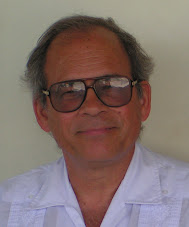Corito Dump. Time to wind up this series of posts on Anguilla's water hazards with a look at the public garbage dump at Corito. It is cutely called Anguilla’s landfill. The word landfill suggests stuff you put into a hole in the ground in order to fill it up and level it out. What the word does not disclose is that in Anguilla we first dug out the hole. We now fill it in with garbage in order to dispose of the garbage. It is only landfill in a very general sense. The word is, in short, a euphemism for waste.
Everything gets buried in  Anguilla’s landfill. There are no restrictions. There are no regulations, except what the security people make up on the spot. It is not even compulsory to bring anything to the landfill. There is no law or regulation against dumping all your garbage on your neighbour’s land. Unless, he finds out and sues you. That is the limit of the regulation in Anguilla.
Anguilla’s landfill. There are no restrictions. There are no regulations, except what the security people make up on the spot. It is not even compulsory to bring anything to the landfill. There is no law or regulation against dumping all your garbage on your neighbour’s land. Unless, he finds out and sues you. That is the limit of the regulation in Anguilla.
I have never been to the Corito Dump. I would not know what to look for, or where to look. I know only from asking around that until a year ago, the hospital dumped its waste there. Body fluids and amputated limbs are now incinerated. It was not always so. If you see one of the dump dogs running around with a large bone in its mouth, don’t worry. No need to call the police. It is only Uncle Harry’s femur from his amputated leg.
Heavy metals such as mercury, lead and cadmium accumulate over time in the bodies of mammals causing serious illnesses. They enter the human body as a contaminant in soil or as a pollutant in groundwater. These metals are some of the most extreme examples of hazardous waste. Lead and cadmium are used in batteries. We dump our batteries in the public dump in Anguilla. Other producers of hazardous waste include dry cleaners, automobile repair shops, exterminators, and photo processing centres. Hazardous waste includes septic tank sludge, fluorescent light bulbs, batteries, cathode ray tubes, paints and solvents, insecticides, herbicides, fungicides, cell phones, computers, and a host of other household goods. In other parts of the world, hazardous waste is not permitted to be disposed of untreated in the public dump as if it were mere domestic waste. We in Anguilla deposit it all untreated in the public dump. Rain falls on it. Some of it dissolves over time in the ground water. It seeps into our aquifer. The Anguilla aquifer consists of a lens of lighter rain water floating on top of the saltier and heavier sea water that soaks into the island from the surrounding sea. The aquifer is where our wells tap into to draw out well water. Many of us drink the stuff. Particularly if we buy water from one of the water suppliers who flourish unregulated and untested around the island.
lead and cadmium accumulate over time in the bodies of mammals causing serious illnesses. They enter the human body as a contaminant in soil or as a pollutant in groundwater. These metals are some of the most extreme examples of hazardous waste. Lead and cadmium are used in batteries. We dump our batteries in the public dump in Anguilla. Other producers of hazardous waste include dry cleaners, automobile repair shops, exterminators, and photo processing centres. Hazardous waste includes septic tank sludge, fluorescent light bulbs, batteries, cathode ray tubes, paints and solvents, insecticides, herbicides, fungicides, cell phones, computers, and a host of other household goods. In other parts of the world, hazardous waste is not permitted to be disposed of untreated in the public dump as if it were mere domestic waste. We in Anguilla deposit it all untreated in the public dump. Rain falls on it. Some of it dissolves over time in the ground water. It seeps into our aquifer. The Anguilla aquifer consists of a lens of lighter rain water floating on top of the saltier and heavier sea water that soaks into the island from the surrounding sea. The aquifer is where our wells tap into to draw out well water. Many of us drink the stuff. Particularly if we buy water from one of the water suppliers who flourish unregulated and untested around the island.
Can I have a beer, please!
I want to leave water now and touch on an education issue in the next post.


 lead and cadmium accumulate over time in the bodies of mammals causing serious illnesses. They enter the human body as a contaminant in soil or as a pollutant in groundwater. These metals are some of the most extreme examples of hazardous waste. Lead and cadmium are used in batteries. We dump our batteries in the public dump in
lead and cadmium accumulate over time in the bodies of mammals causing serious illnesses. They enter the human body as a contaminant in soil or as a pollutant in groundwater. These metals are some of the most extreme examples of hazardous waste. Lead and cadmium are used in batteries. We dump our batteries in the public dump in 

Do not worry it Corito will make for a more affordable golf course for the not so wealthy in the future.
ReplyDelete